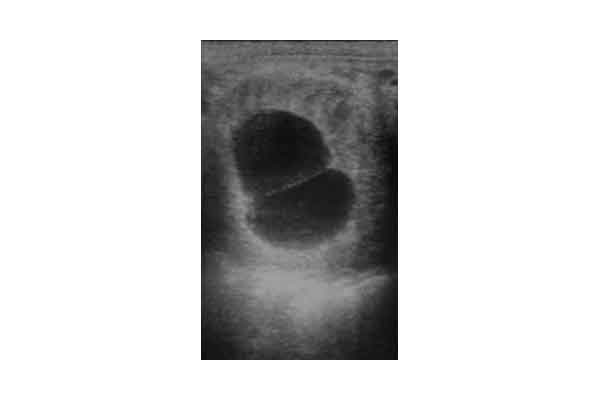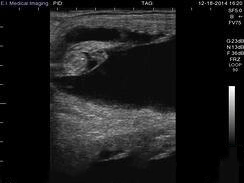In modern equine reproductive management, the role of ultrasound goes far beyond simply answering the question “Is she pregnant?” With advancements in equine ultrasound machine technology, veterinarians can now use real-time imaging to accurately detect twin pregnancies, assess fetal viability, estimate gestational age, and even determine fetal gender. This article outlines the value of ultrasound at each stage of the mare’s pregnancy — and highlights how the Dawei Y6 equine Ultrasound System supports precise, efficient equine pregnancy checks.
1. Early Pregnancy Diagnosis
The first ultrasound examination is typically performed around day 14 post-breeding — the golden window for detecting pregnancy and identifying twins.
Single embryo: Seen as a round, anechoic (dark) structure, ~1–1.5 cm in diameter.
Twin pregnancy: Requires scanning from multiple angles to avoid confusion with uterine cysts or false pregnancy vesicles.
⚠ Twin pregnancies in mares are considered high-risk. Without early intervention, they can often result in abortion. Early detection with equine reproductive ultrasound is essential for timely management.
twin pregnancy
2. Embryonic Development Evaluation (20–45 days)
Between 3–6 weeks of gestation, ultrasound imaging reveals the embryo proper, heartbeat, and two sacs (yolk sac and allantois).
Through assessing:
Relative size and shape of the sacs
Whether the embryo is attached to the uterine wall
Presence of a heartbeat
Whether fetal age matches breeding records.
veterinarians can predict potential pregnancy failure. Signs such as poor development, weak heartbeat, or irregular sac structure may indicate impending embryonic loss — prompting interventions like progesterone supplementation, uterine environment adjustment, or nutritional changes.
Image of a horse 45 days pregnant
3. Mid-Gestation Monitoring & Fetal Sexing (60–120 days)
During mid-pregnancy, the fetus develops more distinct organ structures. Equine ultrasound at this stage focuses on:
Determining fetal gender (via genital tubercle location)
Checking fetal position
Assessing placental attachment and detecting premature separation
In breeding farms where foal sex determination is economically important, ultrasound between days 60–80 can reliably identify male or female foals.
4. Late Pregnancy Fetal & Placental Health (280+ days)
In late gestation, equine obstetric ultrasound assesses fetal well-being and placental function:
Fetal heart rate: Normal 60–80 bpm
CTUP (Combined Thickness of Uterus and Placenta): Detects premature placental separation or inflammation
Amniotic fluid clarity: Indicates fetal metabolism and infection risk
Warning signs — thickened placenta, turbid amniotic fluid, reduced fetal movement — should raise concerns for uterine infection or fetal distress, prompting rapid veterinary intervention or foaling preparation.
Y6 Full-Waterproof Veterinary Ultrasound — A Powerful Tool for Equine Pregnancy Checks
The Dawei Y6 Veterinary Ultrasound Diagnostic System is designed for multi-species abdominal and reproductive imaging — including horses, cattle, sheep, pigs, and companion animals.
Key Features for Equine Applications:
8-inch high-resolution display for clear fetal imaging
Supports convex, linear, rectal convex, and rectal linear probes — ideal for both early and late pregnancy checks
Multiple display modes: B, BB, 4B, M/BM for real-time and frozen-frame analysis
Equine-specific presets — optimized imaging parameters for mare reproductive exams
Waterproof design — suitable for barn and field conditions
Long battery life (≈6 hours) for mobile pregnancy checks in stud farms
High frequency range (2.0–9.0 MHz) for both deep abdominal imaging and detailed rectal scans
Permanent storage (32G) with replay function for case documentation and comparative monitoring
Advanced imaging adjustments: 256 grayscale levels, 10 color maps, dynamic range control, noise suppression, gamma correction
With real-time imaging, high portability, and multi-probe compatibility, the Y6 equine ultrasound scanner empowers veterinarians and breeders to monitor pregnancies from conception to foaling — ensuring safer breeding outcomes and higher foal survival rates.
From early pregnancy detection to late-term fetal monitoring, ultrasound is a cornerstone of equine reproductive management. The Dawei Y6 Veterinary Ultrasound combines durability, portability, and advanced imaging to meet the demands of stud farms and equine practitioners. Regular ultrasound follow-ups — ideally on a monthly basis — not only reduce reproductive risks but also create a complete fetal development record, enabling truly data-driven horse breeding.
Post time: Aug-12-2025






